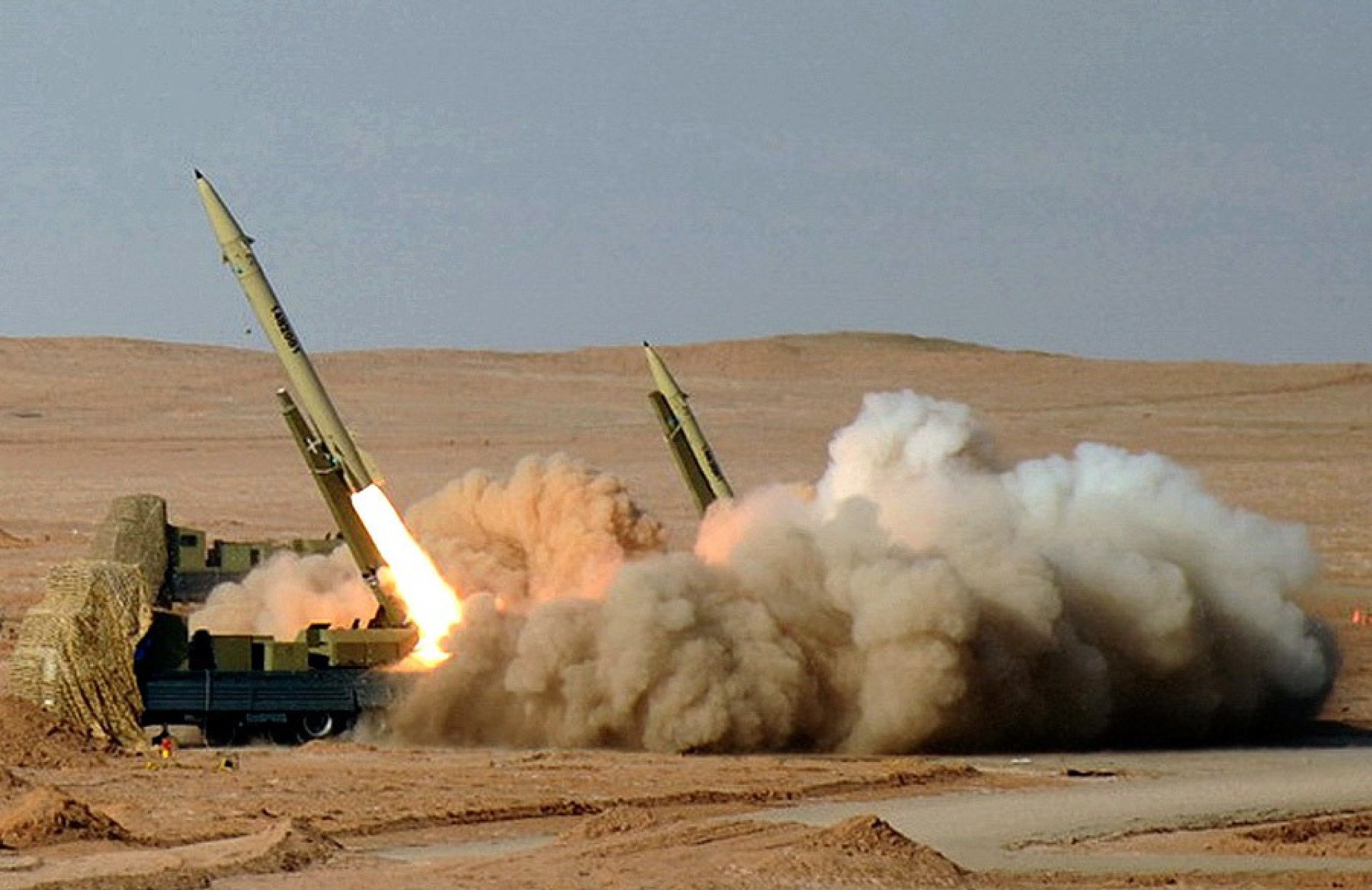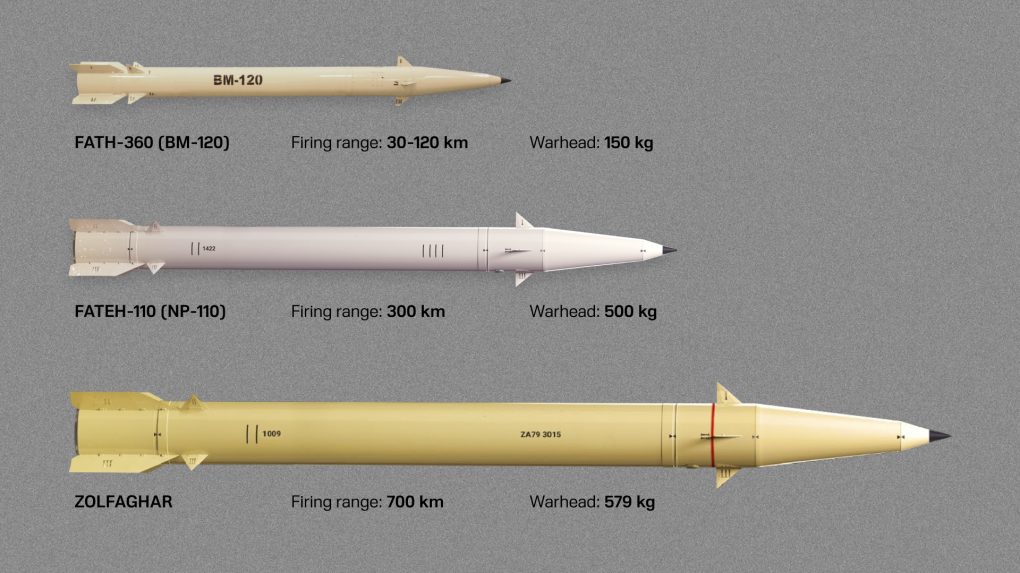- Category
- War in Ukraine
Iran Arms Russia with Ballistic Missiles for Attacks on Ukraine. What’s in the Arsenal?

According to reports, Iran was in talks with Russia on trading ballistic missiles for US dollars and food. Now, it’s attacking US military bases in the Middle East. But what’s actually in Iran’s arsenal?
US media and the Institute for the Study of War (ISW) confirm that Iranian missiles have reached Russia, with reports surfacing since 2023. Although earlier reports lacked verification, recent developments underscore a significant shift.
Firstly, Russia has begun deploying North Korean ballistic missiles, specifically KN-23/24 models, as detailed in our previous report. This alliance with North Korea highlights Russia’s need for ally support and willingness to engage in arms deals with partners, including Iran.
Secondly, an Iranian official has confirmed Iran’s readiness to collaborate with Russia, stating that Russia is a partner similar to Hezbollah. Additionally, Russia is prepared to exchange US currency and food for missiles, with some reports suggesting payment might also include Su-35 fighter jets.
The specific number and types of missiles remain unclear, but they likely arrived via the Caspian Sea to a Russian port. The initial shipment may include Fath-360 and Ababil missiles. What exactly are these missiles, and what other weaponry does Iran have?
Fath-360
Russia may have received a shipment of 200 Fath-360 ballistic missiles (also known as BM-120), according to unverified media reports. This missile is a simplified version of the Fateh-110. The specifications of the Fath-360 are:
Warhead: 150 kg
Total weight: 787 kg
Range: 120 km
Speed: Mach 4
The Fath-360 is launched from mobile ground platforms, which in Iran are mounted on regular trucks and disguised as civilian vehicles.
This ballistic missile could supplement Russia’s C-300 missiles. Russia currently uses these missiles not for air defense but to target frontline Ukrainian cities. Receiving a shipment from Iran could increase Russia’s bombardment intensity.

Fateh-110
This ballistic missile is more powerful and capable of causing greater destruction, comparable to the Russian Iskander missile. The specifications of the Fateh-110 are:
Warhead: 400-500 kg
Total weight: over 3 tons
Range: up to 300 km
Launched from a ground platform, the Fateh-110 was developed about 20 years ago and has been continuously improved to enhance its range and accuracy.
There is no confirmation that these missiles are being supplied to Russia.
Ababil
These are the newest Iranian-designed missiles, and information about them is very limited. The Ababil missile is reportedly a substitute for the C-300.
Warhead: 45 kg
Total weight: 240 kg
Range: up to 85 km
Though its range is relatively short, the missile is said to be capable of precise strikes due to modern guidance systems. It is launched from ground platforms and can target Ukrainian positions or frontline settlements.
Iran showcased this missile at Russia’s “Army 2023” military exposition, and it is listed as potential weaponry Iran might supply to Russia.
Zolfaghar and Dezful
No information currently indicates that Iran is supplying Russia with the Zolfaghar or Dezful missiles. These missiles are not mentioned in sources discussing potential weapon transfers. However, they have the most lethal characteristics:
Zolfaghar: Warhead - 579 kg, Range - 700 km
Dezful: Warhead - 700 kg, Range - 1000 km
This is a brief overview of Iranian missiles, as the country has developed a broad range of weaponry over the years. The country possesses missiles with various ranges, including those reaching up to 2000 km. By supplying weapons to the Houthis, Hamas, Hezbollah, and now Russia, Iran continues to test and advance its missile program in combat conditions. Russia has become a crucial trade partner, while the other organizations are used as proxies. Moscow is prepared to pay for missiles with dollars, food, and technology.
Let Ukraine Strike Back
Ballistic missiles pose a significant threat to Ukraine. Although Patriot air defense systems can intercept these missiles, Ukraine has very few of them, making it currently impossible to cover the entire Ukrainian sky. This shortfall contributes to tragedies like the one in Poltava, where Russia killed over 50 and injured more than 300 people. Two Iskander missiles struck an educational institution, with a flight time of less than three minutes.
One way Ukraine can counter Russian launches is by having the capability to strike back. Iranian missiles are launched from ground platforms, allowing Ukraine to detect and target these systems within Russian territory as they prepare for launch. There has already been an example of preemptively destroying a North Korean KH-24 missile depot in Russia’s Volgograd region. Ukraine must obtain permission from its partners to use their long-range missiles against military targets within Russia.
-29a1a43aba23f9bb779a1ac8b98d2121.jpeg)
-6359eca46c72bde40a90abaaadd6eaa8.png)


-206008aed5f329e86c52788e3e423f23.jpg)
